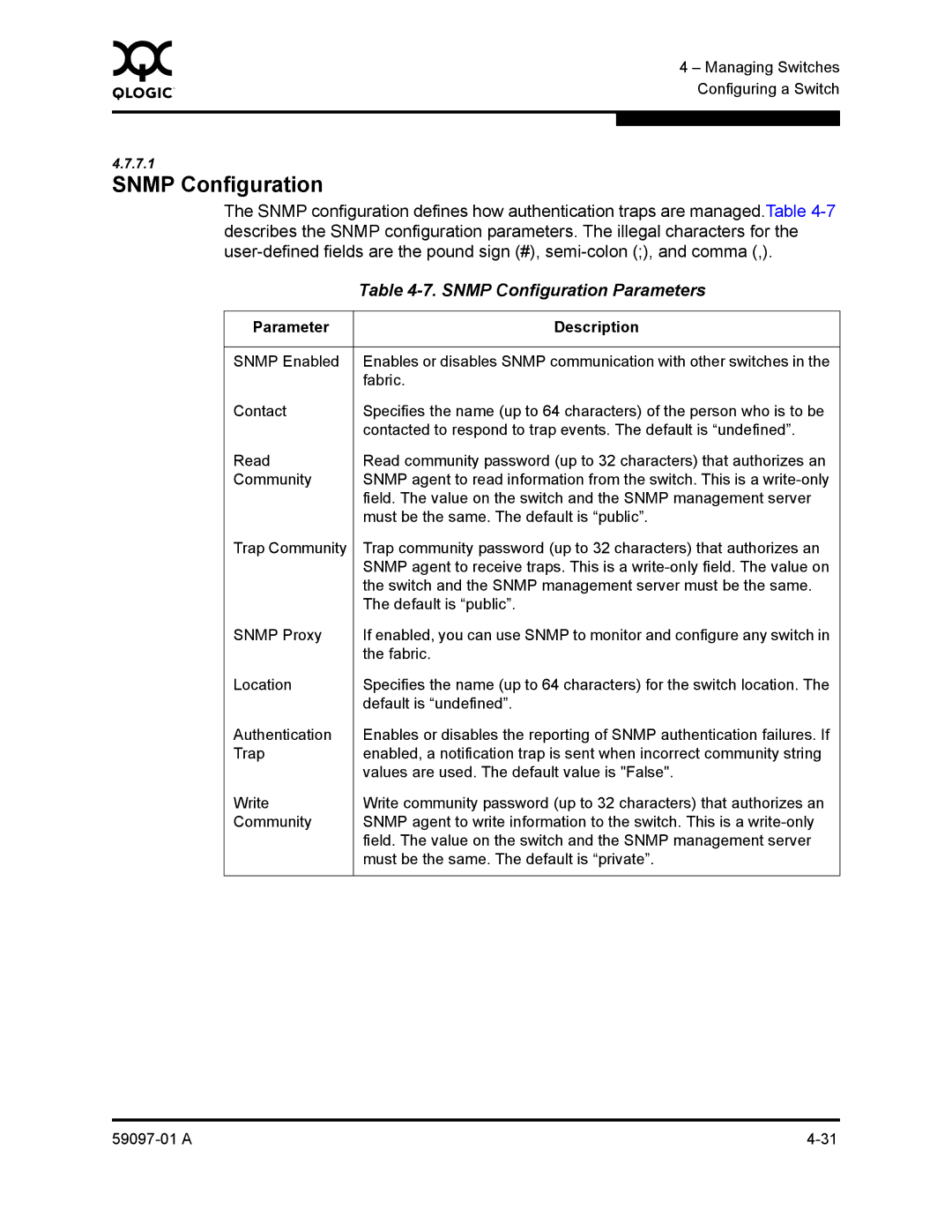0 | 4 – Managing Switches |
| |
| Configuring a Switch |
|
|
|
|
4.7.7.1
SNMP Configuration
The SNMP configuration defines how authentication traps are managed.Table
| Table |
|
|
Parameter | Description |
|
|
SNMP Enabled | Enables or disables SNMP communication with other switches in the |
| fabric. |
Contact | Specifies the name (up to 64 characters) of the person who is to be |
| contacted to respond to trap events. The default is “undefined”. |
Read | Read community password (up to 32 characters) that authorizes an |
Community | SNMP agent to read information from the switch. This is a |
| field. The value on the switch and the SNMP management server |
| must be the same. The default is “public”. |
Trap Community | Trap community password (up to 32 characters) that authorizes an |
| SNMP agent to receive traps. This is a |
| the switch and the SNMP management server must be the same. |
| The default is “public”. |
SNMP Proxy | If enabled, you can use SNMP to monitor and configure any switch in |
| the fabric. |
Location | Specifies the name (up to 64 characters) for the switch location. The |
| default is “undefined”. |
Authentication | Enables or disables the reporting of SNMP authentication failures. If |
Trap | enabled, a notification trap is sent when incorrect community string |
| values are used. The default value is "False". |
Write | Write community password (up to 32 characters) that authorizes an |
Community | SNMP agent to write information to the switch. This is a |
| field. The value on the switch and the SNMP management server |
| must be the same. The default is “private”. |
|
|
